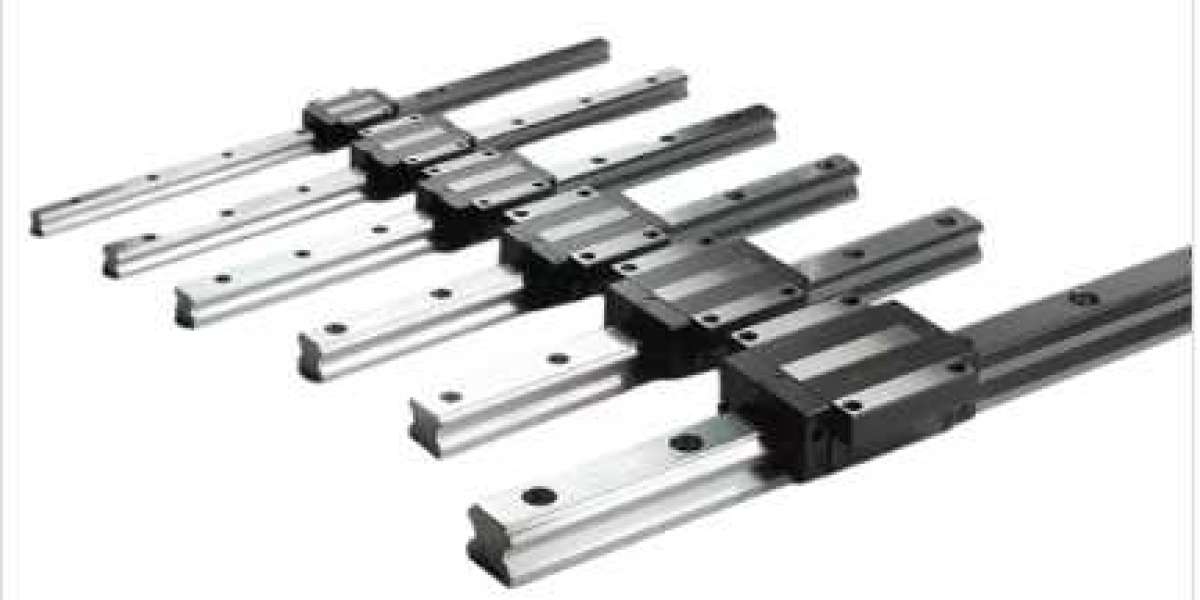motion systems are the silent workhorses that make robotic precision, reliability, and efficiency possible. They translate rotational movement into perfectly controlled linear motion, allowing machines to move smoothly, repeatedly, and accurately along a straight path. Whether it’s a robotic arm placing microchips on a circuit board or an automated conveyor aligning parts for assembly, linear motion systems are what make it all happen.
If you’re looking for high-quality linear rails, bearings, and motion components that deliver unmatched precision and durability, YH Linear Motion provides world-class solutions for automation systems. Visit https://yhlinear.com to learn more about how their linear motion technology supports industries across the globe.
Understanding Linear Motion in Automation
In automation, every millisecond and millimeter counts. The purpose of linear motion systems is simple — to move objects or tools along a defined path with high accuracy and minimal resistance.
A linear motion system typically includes several components:
Linear rails or guides, which provide the motion path.
Carriages or sliders, which hold the moving part.
Actuators, such as ball screws or linear motors, which generate movement.
Bearings, which reduce friction and maintain smooth travel.
When integrated into robotics or automated machines, these systems allow for exact positioning and smooth transitions between operations. This precision enables robots to perform tasks like welding, cutting, inspection, or assembly with consistent results every time.
Without linear motion systems, robots would not achieve the fine-tuned movement necessary for high-speed, high-accuracy automation.
The Importance of Linear Motion Systems in Robotics
Robotics has rapidly become one of the most advanced fields in engineering, requiring motion systems that can perform repetitive tasks with near-perfect precision. Linear motion systems form the skeleton and muscles of these robots, ensuring reliable and efficient performance.
Here’s how they contribute to robotic excellence:
Precision and Repeatability
Robots in industries such as electronics, automotive, and pharmaceuticals must perform the same action thousands of times with micrometer-level accuracy. Linear guides and bearings make this possible by eliminating backlash and providing stable motion paths.Speed and Efficiency
Automation demands speed. Linear rails minimize friction, enabling faster acceleration and deceleration without losing control. The result is smoother, quicker operations that enhance productivity and reduce cycle time.Load Capacity and Rigidity
Whether lifting heavy automotive components or moving delicate sensors, linear motion systems are designed to handle diverse loads. Their high rigidity ensures the robot maintains accuracy even under stress or vibration.Long-Term Reliability
High-quality linear components are built to endure millions of cycles with minimal maintenance. This reliability is critical in environments where downtime directly impacts profitability.
In short, linear motion systems are the foundation of robotic performance, determining how well and how long a machine can operate with precision and efficiency.
Types of Linear Motion Systems Used in Robotics
Not all linear motion systems are the same. Depending on the application, engineers select different types to balance accuracy, cost, and durability.
Linear Guideways (Rails and Blocks):
The most common system in industrial robots, offering high stiffness and load capacity. Ideal for gantry systems and multi-axis movement.Ball Screws:
Convert rotary motion into precise linear motion. Perfect for CNC machinery and high-precision actuators.Linear Motors:
Deliver direct linear movement without mechanical contact, enabling ultra-smooth, silent, and high-speed operations.Linear Bushings and Shafts:
Cost-effective options for light-duty or compact robots requiring simple linear travel.
Each type has unique benefits, and the best solution depends on factors such as the robot’s weight, stroke length, speed, and operating environment.
Key Industries Using Linear Motion in Automation
Linear motion systems are everywhere in modern industry. Here are some major fields where they play a critical role:
1. Industrial Robotics
Robots in factories depend on linear rails for arm extension, pick-and-place accuracy, and tool positioning. Whether in welding lines, packaging systems, or palletizing stations, these guides ensure stable and efficient motion.
2. Semiconductor and Electronics Manufacturing
Here, precision is everything. Linear motion components move wafers, align chips, and guide inspection devices — all requiring nanometer-level accuracy and cleanroom compatibility.
3. Medical and Laboratory Automation
From robotic surgery systems to automated sample handlers, linear motion ensures smooth, vibration-free movement that protects delicate instruments and samples.
4. Automotive Production
Robotic welders, painters, and assemblers rely on linear rails to move with speed and precision. Consistency here directly translates to product quality and production speed.
5. Logistics and Warehousing
Automated storage systems, conveyors, and sorting robots depend on reliable linear bearings and actuators for 24/7 operation. These systems reduce human error and accelerate order processing.
Precision Engineering: How Linear Systems Achieve Accuracy
Accuracy in linear motion comes from design and engineering excellence. Linear rails are ground to micron-level precision, while rolling elements (such as balls or rollers) minimize contact friction.
Key performance factors include:
Straightness of the rail: Any deviation affects overall accuracy.
Preload: The tightness between the slider and rail improves rigidity.
Lubrication: Proper lubrication ensures consistent movement and prevents wear.
Temperature control: Expansion and contraction can alter positioning, so materials and coatings are optimized for stability.
In high-end automation systems, engineers often integrate sensors and encoders directly into the linear guides. These provide real-time feedback to controllers, ensuring exact positioning and movement synchronization.
The Relationship Between Linear Motion and Automation Efficiency
Automation’s biggest promise is efficiency — doing more with less. Linear motion systems contribute to this efficiency in several ways:
Reduced Downtime: Durable materials and precision design mean fewer breakdowns.
Faster Operation: Less friction equals quicker movement and shorter production cycles.
Energy Efficiency: Linear rolling motion consumes less power compared to sliding mechanisms.
Ease of Maintenance: Many modern systems feature self-lubricating technologies.
The overall result is higher throughput, lower operational cost, and improved reliability — exactly what industries demand in today’s fast-paced production landscape.
Integration with Automation Control Systems
Linear motion systems don’t work in isolation — they integrate with control systems that dictate how robots move. In modern setups, servo motors, controllers, and sensors all work together to monitor and adjust motion in real time.
Through these systems, robots can achieve adaptive behavior, correcting their paths instantly if any deviation is detected. The result is an intelligent automation ecosystem capable of both precision and flexibility — vital for Industry 4.0 applications.
Future Trends in Linear Motion for Robotics
The future of robotics depends heavily on advancements in linear motion technology. Here are some of the key trends shaping the next generation of automation:
Smart Linear Motion Systems
Integration of IoT sensors that monitor wear, temperature, and vibration, allowing predictive maintenance.Lightweight and Compact Designs
Use of aluminum and composite materials to reduce weight and improve speed without compromising strength.High-Speed Precision Guides
Enhanced surface finishes and magnetic drive systems for near-zero friction operation.Eco-Friendly Lubrication Solutions
Self-lubricating systems that minimize environmental impact while extending component lifespan.Integration with AI and Machine Learning
Smart controllers that adjust linear movement based on data patterns to improve precision dynamically.
These innovations are not only improving existing robotic systems but also enabling entirely new applications in healthcare, aerospace, and nanotechnology.
Choosing the Right Linear Motion Supplier
Selecting the right linear motion system starts with choosing the right partner. Engineers must consider factors such as load capacity, rigidity, material, accuracy class, and environmental conditions.
That’s where YH Linear Motion stands out. With advanced manufacturing facilities and strict quality control, YH provides linear rails, blocks, and motion components that meet international standards. Each product undergoes rigorous testing to ensure long-term stability and performance even under demanding conditions.
From compact guideways for lightweight robots to heavy-duty rails for industrial automation, YH Linear Motion offers tailored solutions to meet your specific project needs. Explore more at https://yhlinear.com and experience the difference that precision engineering can make.
Real-World Case Studies
Many industries have already seen measurable improvements after integrating high-quality linear motion systems.
Automotive Plants: Replacing old sliding systems with precision linear guides resulted in a 25% increase in production speed and reduced maintenance downtime by 40%.
Semiconductor Facilities: High-precision linear motors reduced particle contamination and improved yield consistency.
Logistics Warehouses: Automated storage systems achieved higher accuracy in sorting and order fulfillment using low-friction linear rails.
These examples illustrate how linear motion isn’t just a component — it’s a catalyst for operational excellence.
Conclusion
Linear motion systems are more than mechanical parts; they are the foundation of modern robotics and automation. Without them, industrial robots would lack the precision, stability, and speed that define advanced manufacturing today.
As technology progresses, linear motion systems will become even more intelligent, efficient, and adaptive — seamlessly integrating with AI, IoT, and digital twin technologies.
For businesses aiming to stay competitive in this new era of intelligent automation, investing in reliable, high-performance linear motion components is a strategic move.
With its proven engineering expertise and commitment to quality, YH Linear Motion continues to drive innovation in precision movement — helping industries worldwide achieve smoother, faster, and more reliable automation.








